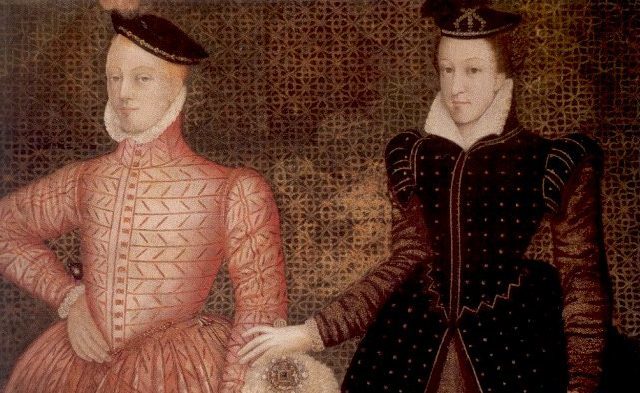
HISTORIAN Anna Groundwater has just republished the classic study, Jenny Wormald’s Mary, Queen Of Scots: A Study In Failure.
It coincides with the Mary, Queen Of Scots Festival in Kinross that took place earlier this month – see maryqueenofscotsfestival.co.uk
Anna told Tracey Bryce the Honest Truth about Scotland’s most famous monarch.
Who was Mary, Queen of Scots?
She lived from 1542 to 1587 and ruled at about the same time as Elizabeth in England. She was the daughter of James V and his French wife, Marie de Guise.
Mary was famed for her beauty, vivacity and charm. Well educated for a woman, she wrote elegant letters in French.
Raised a Catholic, she remained so to her death.
Tell us about her early life?
Her father died when she was just six days old, so Mary became queen as an infant.
Henry VIII of England tried to force an engagement between his infant son Edward and Mary. Having failed, he launched an invasion on Scotland, known as the “Rough Wooing”.
In 1548, it became too dangerous for Mary to remain in Scotland, with the English occupying the Borders. She was sent to her relations at the French court, with her mother remaining in Scotland to rule.
Her engagement was agreed to Francis, son of the French king Henri II. In 1558, they wed and in 1559 became king and queen of France on his father’s death.
And her rule?
Mary’s husband died suddenly in 1560. Her mother had also just died leaving Scotland without a ruler.
The Protestant Reformation had just overthrown the Catholic church in Scotland, so Mary returned to a troubled Scotland in 1561, aged 18, to take the throne.
The turmoil of the Reformation led to old religious ways being replaced by the new kirk. Mary was now a Catholic queen in an officially Protestant country. It was inevitable she would face friction, exacerbated by the powerful Presbyterian John Knox.
She ruled for only six years before being forced to abdicate in 1567, and was replaced by her infant son James VI.
Why was she so controversial?
As a Catholic queen, committed Protestants were never going to like her continuing to follow Catholic practices. Her reign became controversial however over her marriage choices.
Powerful men didn’t like it when she married her cousin, Henry Stewart, Lord Darnley. This started two years of political turmoil.
When he was killed, she caused outrage by quickly marrying the man accused of his murder, Francis, Earl of Bothwell. Some accused her of involvement in Darnley’s murder, and of adultery with Bothwell.
She was also controversial because she spent so much time trying to get Elizabeth to recognise her right to succeed her as queen of England.
What about her imprisonments?
Mary was imprisoned by Scottish nobles in Lochleven Castle. She retained support however, and when she escaped in 1568 thousands rallied to her cause.
Sadly, she lost the battle of Langside against those that supported her son’s kingship. She fled to England.
But she was the last thing the Protestant Elizabeth wanted, as Mary represented a Catholic threat to her English crown. So Elizabeth locked her up for the next 19 years.
Tell us some things we might not know about Mary?
Mary liked dressing up as a man. She would surprise courtiers, and ambassadors by appearing at dinner in men’s clothes. And she was a keen golfer.
How did she meet her end?
Mary was involved in plots to escape, remove Elizabeth and replace her as queen. Elizabeth’s spymaster, Walsingham, managed to get evidence of her involvement in the Babington Plot in 1586.
She was tried and sentenced to death. Elizabeth signed her death warrant in 1587 and Mary was executed at Fotheringhay castle.
Her execution was her biggest triumph – a red martyr’s dress was revealed as she was disrobed, ensuring her legendary status.
Anna Groundwater can be reached on Twitter @agroundw

Enjoy the convenience of having The Sunday Post delivered as a digital ePaper straight to your smartphone, tablet or computer.
Subscribe for only £5.49 a month and enjoy all the benefits of the printed paper as a digital replica.
Subscribe